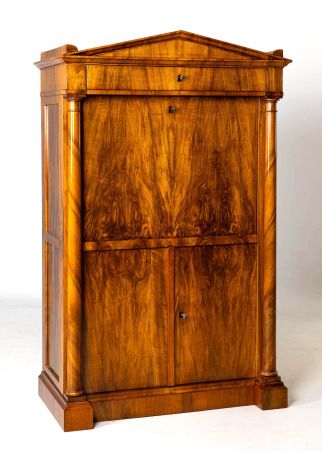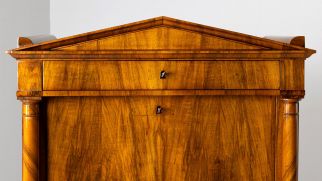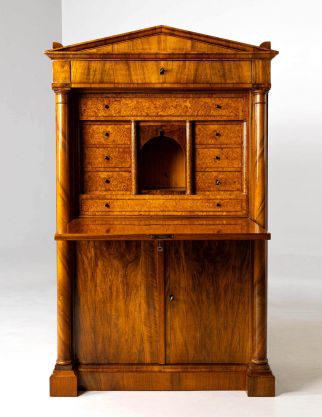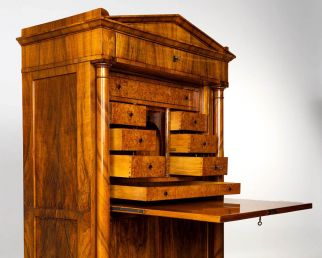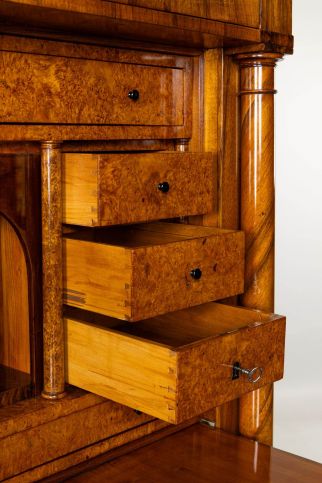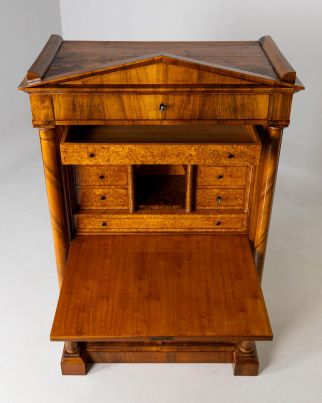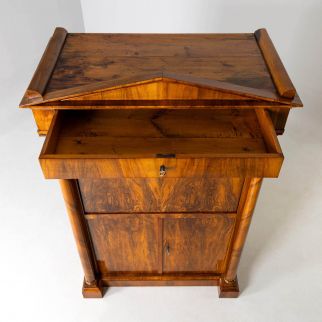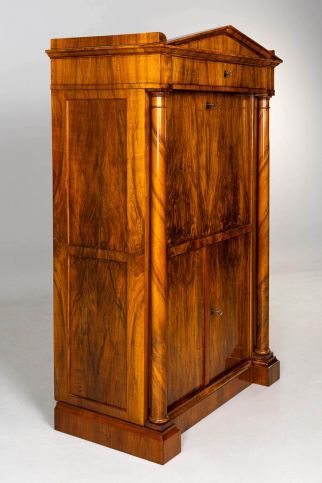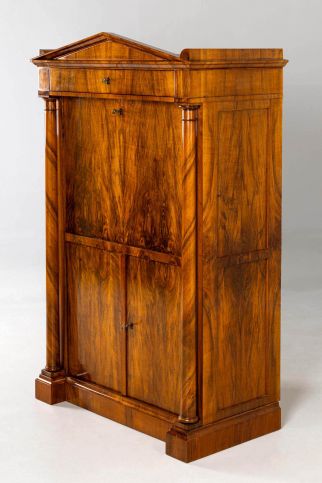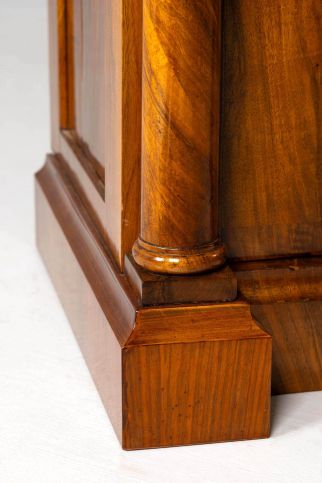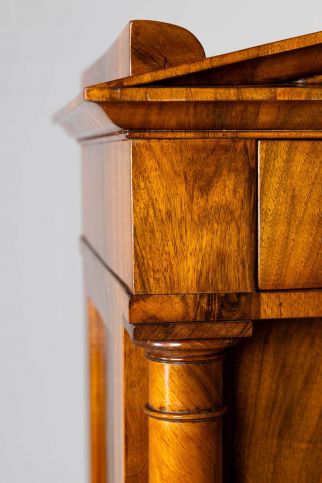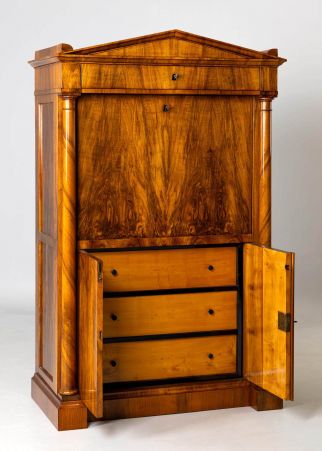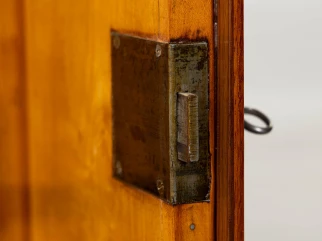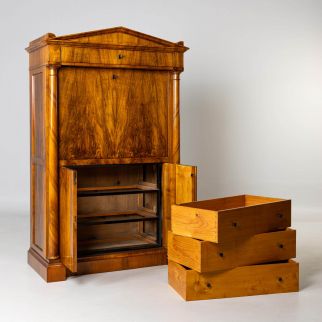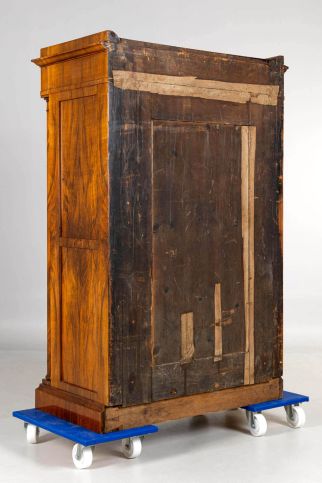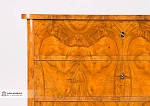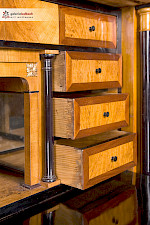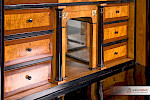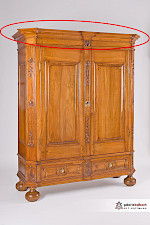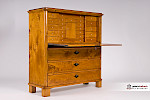Biedermeier secretary with Schinkel roof and columns
Southern Germany
Walnut, maple burl
Biedermeier around 1825
Dimensions: H x W x D: 163 x 100 x 55 cm
Description:
Strict and classic writing cabinet from the Swabian Biedermeier period around 1825.
The strict architectural character is created firstly by the plinth area, which has no feet; secondly by the free-standing columns, which stand on risalike bases protruding from the plinth at the bottom and support the overhanging entablature at the top; and thirdly by the triangular gable, the so-called Schinkel roof.
If we take a closer look at the columns, we realise that they are veneered all the way round. Veneering such small radii required exceptional craftsmanship at the time the piece of furniture was created. It was achieved with a perfection that is simply astonishing. The two columns are perfectly integrated into the overall appearance of the front of the furniture in their mirror image.
If we open the lower doors, we see three internal drawers. The ebonised framing and the likewise blackened pull knobs stand in stark contrast to the light maple wood.
The appearance, orientated towards the prevailing architecture of the time, is also continued in the interior. The characterising feature here is above all the burl veneer applied to the entire surface, which is highly structured but at the same time almost directionless and makes the surface appear to be made of stone. The two-dimensionality of the single-door design is subtly interrupted by the slightly recessed centre section with its set half-columns and by the ebonised pull knobs and the keystone of the round arch.
The upper end is formed by a cornice drawer with the roof construction above. The strong emphasis on the triangular gable is unusual, as the shape of the horizontal moulding was also used for the two sloping lines. This unusual detail is only known from a few pieces of furniture, including a secretary made around 1830 for Zeil Castle near Reichenhofen, which also has other similarities with the piece of furniture on offer here and which is illustrated in Angus Wilkie - Biedermeier - Eleganz und Anmut einer neuen Wohnkultur am Anfang des 19. Jahrhunderts on p.98.
Interesting facts about burl wood:
[...] Another preference of the [Biedermeier] period - beyond the large-scale veneer pictures - was for heavily textured veneers, either with shimmering waves and lights in the wood, such as birch, ash and maple, or with the flaming, small-scale markings of burl burl wood. This extremely hard wood, which is difficult to saw into veneer sheets, or the burl wood of diseased trunk growths, was the subject of a very special cult. Whereas in the 18th century it was only possible to use small pieces and narrow strips for inlays, the new circular and band saws powered by water and steam now made it possible to cut larger areas of veneer from this extremely tough wood. [...] [Ottomeyer, Schlapka - Biedermeier Interieurs und Möbel p. 113]
Condition:
Restored condition suitable for everyday use. Shellac hand polished.
Please compare the following literature:
Angus Wilkie - Biedermeier - Eleganz und Anmut einer neuen Wohnkultur p.98
Rainer Haaff - Biedermeiermöbel ed. 2006 fig.733
Article found under: Secretaries
Video secretary with Schinkel roof
Also interesting
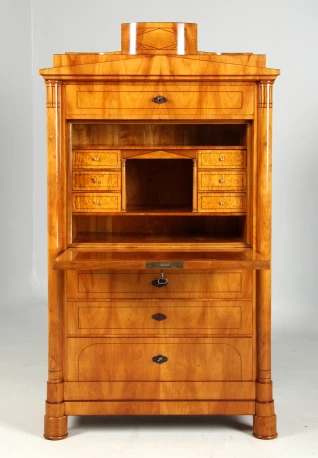
Antique writing cabinet with leather fittings and thread inlays
Austria
Cherry and others
Biedermeier around 1830
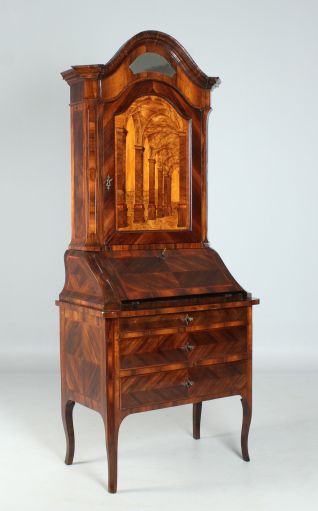
Secretary with Architectural Marquetry
Italy
Rosewood a.o.
second half 18th century
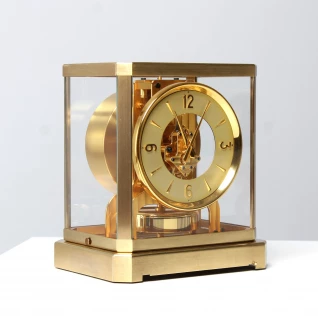
Early Atmos Classique from Jaeger LeCoultre
Switzerland
Brass, partly gold-plated
Year of construction 1950

